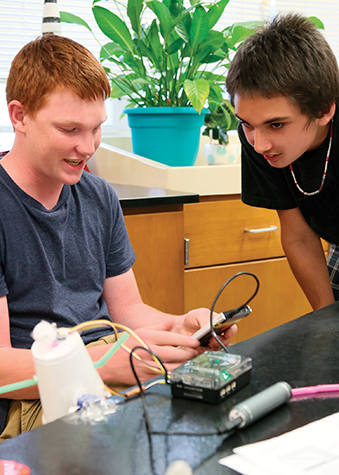Preparing Students for Careers that Don’t Yet Exist
Dec 18, 2016 03:34AM ● By Family Features
To truly prepare for careers of the future, it’s important for students to consider ways both in the classroom and outside of it that they can learn the essential skills needed to solve problems and think critically; skills that will serve them well in any career field.
Today’s students are growing up in an increasingly STEM (Science, Technology, Engineering and Math) focused world, regardless of career choice. You can help your student develop a deeper understanding of STEM and other lifelong skills to prepare them for any future career with these strategies that give students first-hand experience:

Shadow an Expert
Many STEM careers are expected to grow faster than the average for all occupations, according to the Bureau of Labor Statistics, and the STEM field is expected to increase by 9 million jobs by 2022.
Among the benefits of job shadowing, some of the most important include gaining insight on company cultures, picking the brains of experts and, perhaps most valuable for the future, logging time with potential future employers. For example, a student could shadow a computer programmer to gain knowledge of the ins and outs of coding in a professional setting. It’s never too early to start building a network of professional contacts.
Take Advantage of Classroom Technology
Of course, despite the benefits of learning outside of school, the classroom is one of the most important educational incubators for the next generation of STEM experts. To make the school experience truly worthwhile for today’s students, learning the technology of the future is a necessity.
One such tool is the TI-Innovator Hub, which helps motivate students to explore coding, math, science and engineering design. The palm-sized box with a built-in microcontroller plugs into the graphing calculator many middle and high school students already own, and gives them access to the same technology used by leading engineers around the world to design cutting-edge products from smart watches to 3-D printers. It introduces students to coding – the language that tells things how to work, when and in what order – helping them do things like making their own stoplight or turning bananas into musical instruments.
For more tips and tools to inspire the next generation of innovators, problem-solvers and critical thinkers, visit education.ti.com.
Participate in Camps and Programs
While classroom participation gives students a general introduction to STEM, those who are interested in going a step further can choose to attend camps or take part in specialized programs. Some options include joining a robotics team to learn about engineering and technology, attending a coding camp to experiment with programming or becoming a part of a math club to engage with fellow number crunchers.
By attending camps or joining programs, STEM students can surround themselves with peers of similar interests to help boost excitement for these critical subjects for career success.
The steps students take today are crucial to preparing them for the future. With the right tools, experiences and insights, today’s students will be ready to tackle successful careers and have the skills to drive innovation forward.




